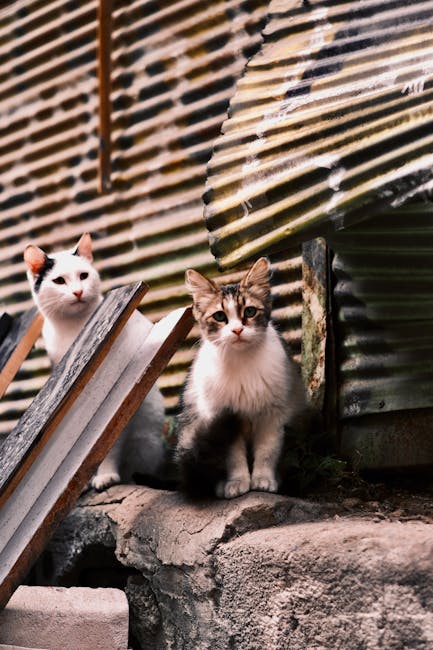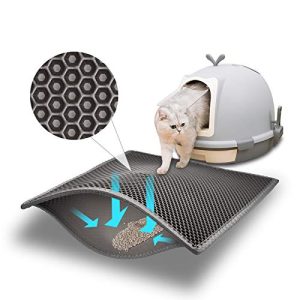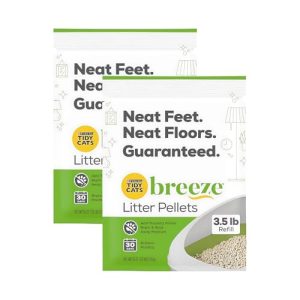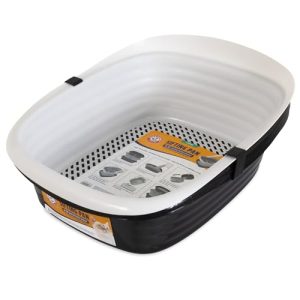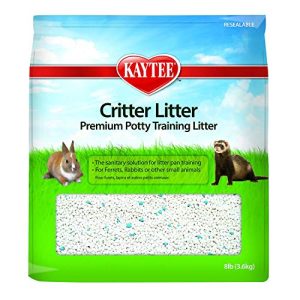Are you tired of constantly cleaning up cat hair from your clothes and furniture? Shedding can be frustrating, especially if you want a clean home without giving up the joy of having a furry friend.
But what if you could find a cat that sheds less, making your life easier? You’ll discover which cats shed the least and get premium advice to keep your feline friend happy and your home spotless. Keep reading to find out how to enjoy the perfect balance of companionship and cleanliness.
Low-shedding Cat Breeds
Low-shedding cat breeds are perfect for people who want less fur around the house. These cats lose very little hair, making cleaning easier. They also cause fewer allergies for sensitive owners.
Choosing a low-shedding cat can help maintain a cleaner home. It also reduces the need for frequent grooming. Here are some popular breeds known for shedding less.
Sphynx
The Sphynx has almost no hair, so it sheds very little. Its skin feels warm and soft to touch. This breed needs regular baths to remove oils from its skin.
Balinese
Balinese cats have long hair but shed less than other long-haired cats. Their fur is silky and fine. They require regular brushing to keep their coat healthy.
Russian Blue
Russian Blues have dense, short fur that sheds minimally. Their double coat traps loose hairs. They are easy to care for and rarely leave hair around.
Cornish Rex
Cornish Rex cats have very short, curly fur. They shed little because their coat lacks the usual guard hairs. Their soft coat feels like velvet.
Devon Rex
Devon Rex cats have wavy, thin fur that sheds less than most breeds. Their unique coat requires gentle grooming. They are playful and affectionate pets.
Factors Affecting Shedding
Shedding varies widely between cats, and understanding the factors behind it can help you manage your pet’s fur better. Several elements influence how much a cat sheds, from their genetic makeup to their overall health. Knowing these can guide you in choosing the right cat breed if shedding is a concern for you.
Genetics
Shedding is largely influenced by a cat’s genetics. Some breeds naturally shed less because of their hair type or growth cycle. For example, breeds like the Siamese or the Russian Blue have shorter coats that shed minimally compared to long-haired breeds like the Maine Coon.
It’s worth asking yourself: does your lifestyle suit a high-shedding cat, or would a low-shedding breed fit better? Understanding genetics helps set the right expectations before bringing a cat home.
Diet And Nutrition
Your cat’s diet plays a crucial role in the quality of its fur and the amount it sheds. A balanced diet rich in omega-3 and omega-6 fatty acids can reduce excessive shedding by promoting healthy skin and coat.
Think about what you feed your cat daily. Poor nutrition can cause fur to become brittle and fall out more easily, while a nutritious diet supports strong, healthy hair that stays put.
Seasonal Changes
Most cats shed more during seasonal transitions, especially in spring and fall. They lose old fur to prepare for the changing temperatures — thicker coats for winter and lighter ones for summer.
Have you noticed your cat leaving more fur around during certain months? This pattern is natural, but you can manage it by increasing grooming during these peak shedding times.
Health Conditions
Excessive shedding can sometimes signal underlying health problems. Conditions like allergies, parasites, or skin infections cause fur loss beyond normal shedding.
If your cat suddenly starts shedding more than usual, it’s important to consult a vet. Early diagnosis can prevent more serious issues and keep your cat comfortable.
Managing Cat Shedding
Managing cat shedding can feel like a never-ending battle, especially if your feline friend loves to snuggle on your favorite clothes. But with the right approach, you can keep loose fur under control and maintain a cleaner home. Understanding practical ways to handle shedding helps both you and your cat stay comfortable and happy.
Regular Grooming Tips
Brushing your cat daily reduces the amount of loose hair that ends up around your house. Focus on gentle strokes that follow the direction of the fur to avoid irritating your pet’s skin. Pay extra attention during seasonal changes when shedding tends to increase.
Try to make grooming a bonding moment. Reward your cat with treats or pets to keep them relaxed and cooperative. If your cat is shy about brushes, start with a soft cloth to get them used to the sensation.
Best Tools For Shedding Control
Choosing the right grooming tool makes a big difference. Slicker brushes work well for short-haired cats, while undercoat rakes are great for breeds with thick fur. De-shedding tools like the Furminator can remove loose undercoat hair efficiently but use them sparingly to avoid skin irritation.
- Soft-bristle brush: for sensitive or short-haired cats
- Undercoat rake: ideal for dense or double-coated breeds
- Rubber grooming mitt: great for removing loose fur gently
- Lint rollers: handy for quick cleanups on furniture and clothing
Have you noticed which tool your cat prefers? Some cats respond better to mitts than brushes, which can make grooming easier for both of you.
Bathing Frequency
Bathing isn’t always necessary for cats, but occasional baths can help reduce shedding, especially if your cat has oily or dirty fur. Use a mild, cat-specific shampoo to protect their skin and fur. Too frequent baths can dry out their skin and make shedding worse.
Most cats benefit from baths every 4 to 6 weeks if they tolerate water well. If your cat dislikes water, consider using waterless shampoos or pet wipes to clean their coat.
Home Cleaning Hacks
Shedding isn’t just about grooming your cat—it’s about managing the fur in your living space. Vacuum frequently using a vacuum designed for pet hair. Consider investing in a robotic vacuum to keep fur off the floors effortlessly.
Use washable covers on furniture and wash them regularly. Sticky rollers and damp microfiber cloths also pick up stray hairs quickly from clothes and upholstery.
- Place doormats to reduce outdoor dirt that sticks to your cat’s fur
- Keep air filters clean to reduce allergens and airborne hair
- Designate a pet-free zone to minimize fur spread in sensitive areas
What cleaning tip has worked best in your home to keep cat hair at bay?
Benefits Of Low-shedding Cats
Low-shedding cats offer many advantages for pet owners. They help keep homes cleaner and reduce allergens in the air. These cats require less grooming, saving time and effort. Choosing a low-shedding cat can improve comfort and hygiene for families.
Allergy Reduction
Low-shedding cats release fewer allergens into the environment. This helps people with mild cat allergies feel better. Less hair means fewer allergy triggers on furniture and clothes. It creates a more comfortable living space for sensitive individuals.
Cleaner Home Environment
Less cat hair means a tidier home. Floors, sofas, and bedding stay cleaner longer. Dust and hair build-up reduce significantly with low-shedding cats. This lowers the need for constant cleaning and vacuuming. It also helps keep air filters and vents clearer.
Ease Of Care
Low-shedding cats need less brushing and grooming. This saves time and reduces hairballs. Owners spend less time cleaning up loose fur. These cats are easier to maintain, especially for busy people. They fit well into active lifestyles and small spaces.
Adoption Tips For Low-shedding Cats
Choosing a low-shedding cat can help keep your home cleaner and reduce allergy symptoms. Adoption is a great way to find a cat that fits your lifestyle. Preparation makes the process easier and more rewarding. Knowing where to find these cats and what to ask can save time and effort.
Where To Find Them
Specialty breeders focus on low-shedding cat breeds. Some popular breeds include the Siamese, Russian Blue, and Sphynx. Pet stores rarely have specific breed cats. Online breed registries and cat clubs list reputable breeders. Animal shelters sometimes have low-shedding cats or mixed breeds. Rescue groups may also offer specific breed adoptions.
Questions To Ask Breeders
- Do you specialize in low-shedding breeds?
- Can you provide health and vaccination records?
- Are the cats socialized and well cared for?
- What is the cat’s temperament like?
- Can I meet the cat’s parents or see photos?
- Do you offer a health guarantee or return policy?
Adopting From Shelters
Shelters often have cats with mixed traits, including low shedding. Staff can guide you to cats that shed less. Spend time with the cat to observe its coat and behavior. Ask about the cat’s history and health. Adoption fees usually cover vaccinations and spaying or neutering. Giving a shelter cat a home saves lives and supports animal welfare.
Frequently Asked Questions
Which Cat Breeds Shed The Least?
Breeds like the Siamese, Sphynx, and Russian Blue shed very little. These cats are ideal for allergy sufferers. Their minimal shedding reduces cleaning and maintenance needs in your home.
How Can I Reduce My Cat’s Shedding?
Regular grooming and brushing remove loose fur and reduce shedding. Feeding a balanced diet supports healthy skin and coat. Keeping your cat hydrated also helps minimize shedding naturally.
Are Hypoallergenic Cats Non-shedding?
Hypoallergenic cats produce fewer allergens, but may still shed fur. Non-shedding breeds, like the Sphynx, have minimal fur but require skin care. Both types help reduce allergic reactions effectively.
Does Shedding Vary With Cat Age?
Yes, younger cats shed less than older cats. Older cats may shed more due to health or seasonal changes. Regular grooming helps control shedding regardless of age.
Conclusion
Choosing a low-shedding cat breed can ease cleaning efforts. Certain breeds, like the Siamese and the Devon Rex, shed less. These cats often require minimal grooming. This makes them ideal for busy households. Always consider allergies when selecting a pet.
Some breeds produce less dander. This reduces allergic reactions. Do your research before adopting. A little planning ensures a happy home. Both for you and your new feline friend. Cats are great companions. They bring joy and love. Selecting the right breed can enhance your life.
Enjoy your furry friend with fewer shedding worries.
